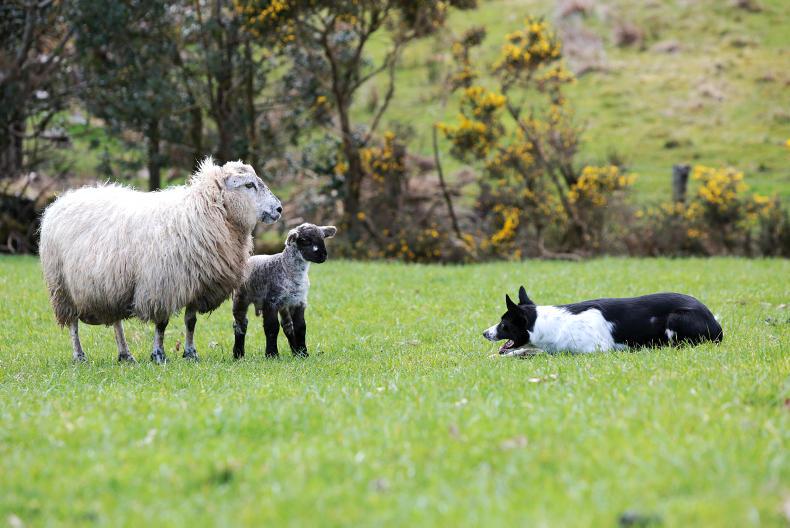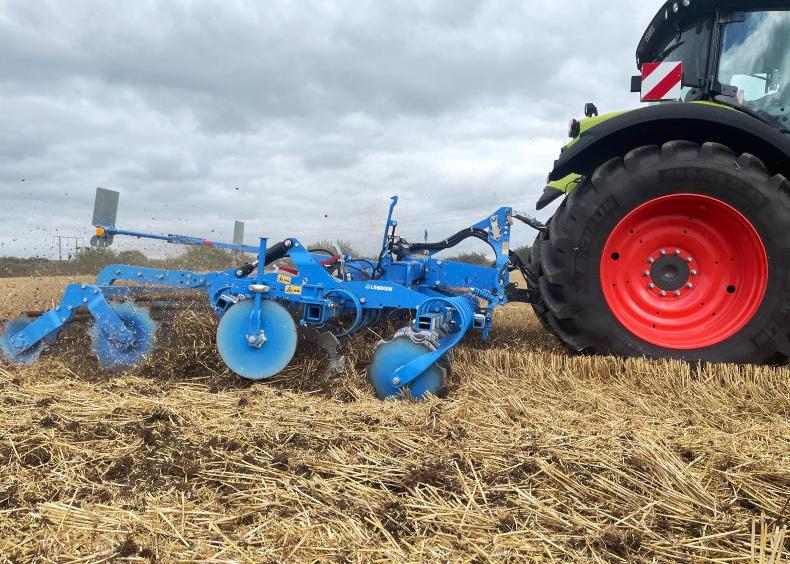The reliance of the sheep sector on direct payments has continued to increase, with cheques in the post accounting for 137% of sheep farmers’ income.
Sheep sector incomes took a hammering in 2018, according to the Teagasc National Farm Survey, down 21% to €13,769.
The main lambing season coincided with the difficult March weather and those finishing lambs were hampered by drought conditions.
Direct payments were up to almost €19,000, meaning sheep farmers lost over €5,000 by farming in 2018.
One third of sheep farms are now earning less than €5,000 a year.
Sheep farmers were some of the biggest benefactors from the increase in ANC payments, up 10%, underlining their continued presence in more marginal areas. GLAS payments also increased by 3%.
Bills
The concentrate bill for the average sheep farm of €8,500 was twice that of their suckler counterpart. This increase of one third was the largest rise across all drystock sectors.
Similar to other sectors, the cost of fodder-making was one of the key reasons for the overall increase in sheep farm costs.
Fertiliser expenditure increased by 11% to €3,000, while contracting charges were up 22% to €2,406.
Sheep farming for the average Irish flock of 129 ewes on 49ha returned a gross margin of €625, including a basic payment of €235, in 2018. This is a decrease of 12% on 2017.
Viability
In terms of economic viability, the sheep sector has the highest percentage of farms classed as vulnerable.
A farm is classed as viable if it can return a minimum wage of €19,616 per labour unit and provide a 5% return on investment in non-land assets.
Farms are vulnerable if they have a non-viable farm and neither the farmer nor a spouse have an off-farm income. A total of 44% of sheep farms fall into this category.
Just 20% of sheep farms are viable and the remaining 35% are supplementing a non-viable farm with an off-farm income.
Read more
Family farm incomes plunge by over 20%
Suckler farms downsize as key costs climb
The reliance of the sheep sector on direct payments has continued to increase, with cheques in the post accounting for 137% of sheep farmers’ income.
Sheep sector incomes took a hammering in 2018, according to the Teagasc National Farm Survey, down 21% to €13,769.
The main lambing season coincided with the difficult March weather and those finishing lambs were hampered by drought conditions.
Direct payments were up to almost €19,000, meaning sheep farmers lost over €5,000 by farming in 2018.
One third of sheep farms are now earning less than €5,000 a year.
Sheep farmers were some of the biggest benefactors from the increase in ANC payments, up 10%, underlining their continued presence in more marginal areas. GLAS payments also increased by 3%.
Bills
The concentrate bill for the average sheep farm of €8,500 was twice that of their suckler counterpart. This increase of one third was the largest rise across all drystock sectors.
Similar to other sectors, the cost of fodder-making was one of the key reasons for the overall increase in sheep farm costs.
Fertiliser expenditure increased by 11% to €3,000, while contracting charges were up 22% to €2,406.
Sheep farming for the average Irish flock of 129 ewes on 49ha returned a gross margin of €625, including a basic payment of €235, in 2018. This is a decrease of 12% on 2017.
Viability
In terms of economic viability, the sheep sector has the highest percentage of farms classed as vulnerable.
A farm is classed as viable if it can return a minimum wage of €19,616 per labour unit and provide a 5% return on investment in non-land assets.
Farms are vulnerable if they have a non-viable farm and neither the farmer nor a spouse have an off-farm income. A total of 44% of sheep farms fall into this category.
Just 20% of sheep farms are viable and the remaining 35% are supplementing a non-viable farm with an off-farm income.
Read more
Family farm incomes plunge by over 20%
Suckler farms downsize as key costs climb









SHARING OPTIONS